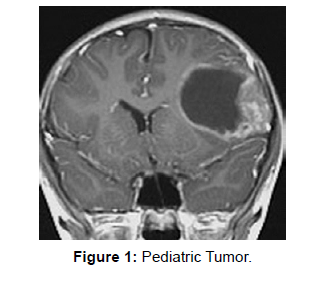Radiology on Pediatric Extra-Cranial Tumor
Received: 05-Sep-2022 / Manuscript No. science-22-76602 / Editor assigned: 07-Sep-2022 / PreQC No. science-22-76602 (PQ) / Reviewed: 21-Sep-2022 / QC No. science-22-76602 / Revised: 23-Sep-2022 / Manuscript No. science-22-76602 (R) / Published Date: 30-Sep-2022 DOI: 10.4172/science.1000135
Image Article
Dynamic contrast-enhanced magnetic resonance imaging (DCEMR) is transforming into a for the most part recognized equal strategy for diagnosing tumors in grown-ups [1]. This strategy is additionally useful to foresee growth reaction to anticancer therapy and screen the cancer reaction to the treatment [2]. Past examinations using DCE-MR showed that dangerous cancers regularly showed faster and more significant levels of improvement than normal tissue. This upgrade trademark showed that compromising dangerous growths extended vascularity and endothelial permeability to the difference particles than that of normal or less forceful dangerous tissues [3]. In numerous growths, the assessments of miniature vascular thickness made on histopathological tests related personally with different clinical stages. The relationship could be on the grounds that of the fast cancer development which should be maintained by significantly unique angiogenesis. The more intense developments were consequently associated with higher angiogenesis-related microvasculature abnormalities (Figure 1).
In view of this histopathological confirmation it had been suggested that DCE-MR might actually give extra free lists of angiogenic development and could thus go similarly a prognostic pointer in an extensive extent of growth types. DCE-MR time power bend plans are arranged into three sorts: Type 1, tenaciously updating (moderate), which suggests less angiogenic; Type 2, level sort, which has a center likelihood for harm; and type 3, waste of time type, which is normal for threat with a great deal of angiogenesis. Our previous focus on the utilization of DCE-MR in a wide extent of pediatric extra-cranial tumor showed relative results as in adults. Type 1 twist with maximal improvement force (SImax) fewer than 350 may be an additional pointer for h harmless or latent growths. The degree of development rottenness was associated personally with pathology revelations in follow-up cases. The shortfall of illumination has an upper hand over CT or PET in pediatric applications.
References
- Bhujwalla ZM, Artemov D, Glockner J (1999) Tumor angiogenesis, vascularization, and contrast-enhanced magnetic resonance imaging. Top Magn Reson Imaging 10: 92-103.
- Padhani AR (1999) Dynamic contrast-enhanced MRI studies in human tumours. Br J Radio 72: 427-431.
- Weidner N (1996) Intratumoural vascularity as a prognostic factor in cancers of the urogenital tract. Eur J Cancer 32A: 2506-2512.
Indexed at, Google Scholar, Crossref
Indexed at, Google Scholar, Crossref
Citation: Kiran R (2022) Radiology on Pediatric Extra-Cranial Tumor. Arch Sci 6: 135. DOI: 10.4172/science.1000135
Copyright: © 2022 Kiran R. This is an open-access article distributed under the terms of the Creative Commons Attribution License, which permits unrestricted use, distribution, and reproduction in any medium, provided the original author and source are credited.
Share This Article
Open Access Journals
Article Tools
Article Usage
- Total views: 940
- [From(publication date): 0-2022 - Nov 24, 2024]
- Breakdown by view type
- HTML page views: 766
- PDF downloads: 174

